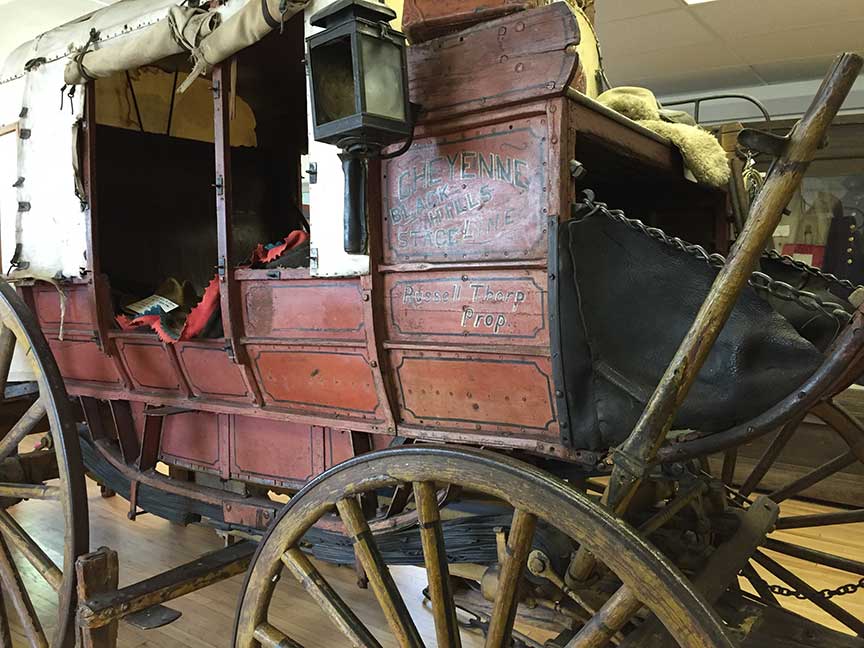One of the big attractions of a Wild West show was the stagecoach. Many shows featured depictions of hold-ups, complete with runaway coaches, passengers held at gunpoint, and the dispatch of the bad guys.
In real life, stagecoach travel was far from comfortable, and it could be dangerous. Passengers had to deal with dust and heat and long stretches of time in cramped quarters on top of bare-bones springs. Tempers often flared, which led to this list of tips for stagecoach travel that was published in the Omaha Herald in 1877. I found the list at the Hot Sulphur Springs Museum in Colorado on a research trip with Lee Tillotson, my co-author of Following in Their Footsteps.
The sign claims “It was said that there were classes of passengers- when the horses come to a steep hill, the driver shouted: ‘First Class passengers, stay where you are; Second Class passengers, get out and walk; Third Class passengers, get out and push.'”
Here are the tips for the plains traveler in 1877, and you might find that some of them are applicable to today’s travelers.
- The best seat inside a stagecoach is the one next to the driver.
- If a team runs away, sit still and take your chances. If you jump, nine times out of ten, you will be hurt.
- Don’t smoke a strong pipe inside, especially in the morning.
- Spit on the leeward side of the coach.
- Don’t swear, nor flop over on your neighbor when sleeping.
- Never attempt to fire a gun or pistol while on the road; it may frighten the team.
- Don’t discuss politics or religion.
- Don’t grease your hair before starting or dust will stick there in sufficient quantities to make a respectable ‘tater’ patch.
Cowboy Lingo of the Day:
Way-Bill – A list of the passengers in a stagecoach, railroad car, steamboat, or other public conveyance.

This stagecoach lives in the museum in Lusk, Wyoming.

